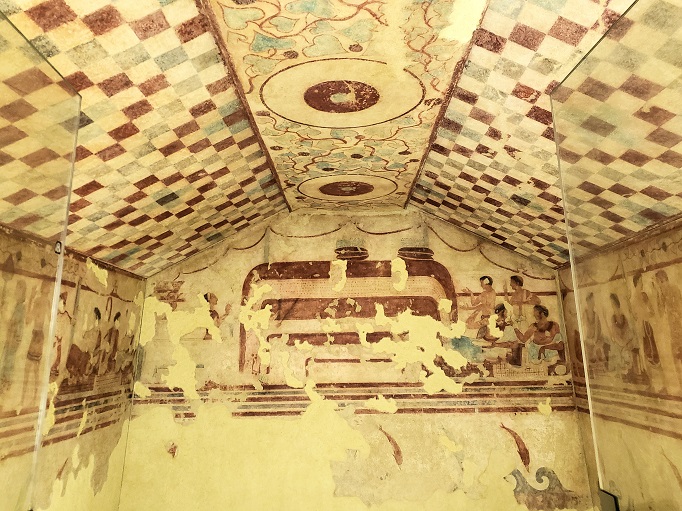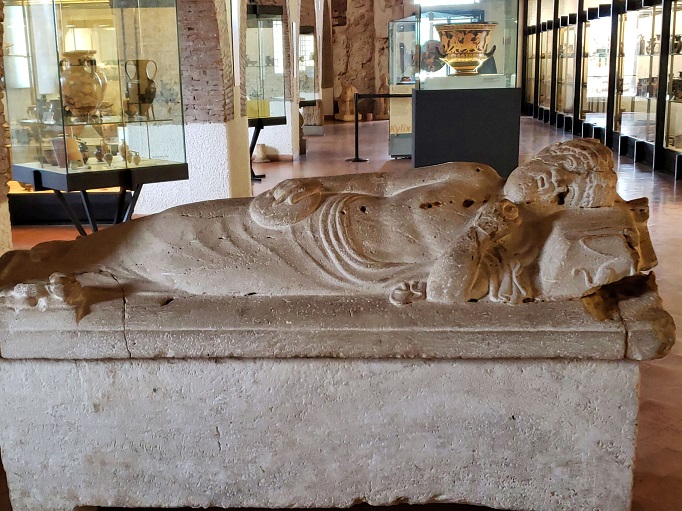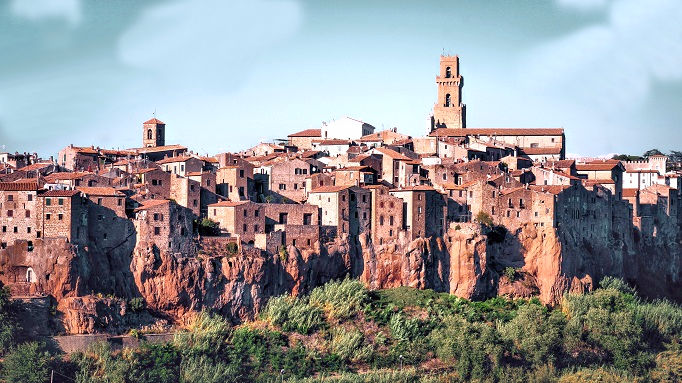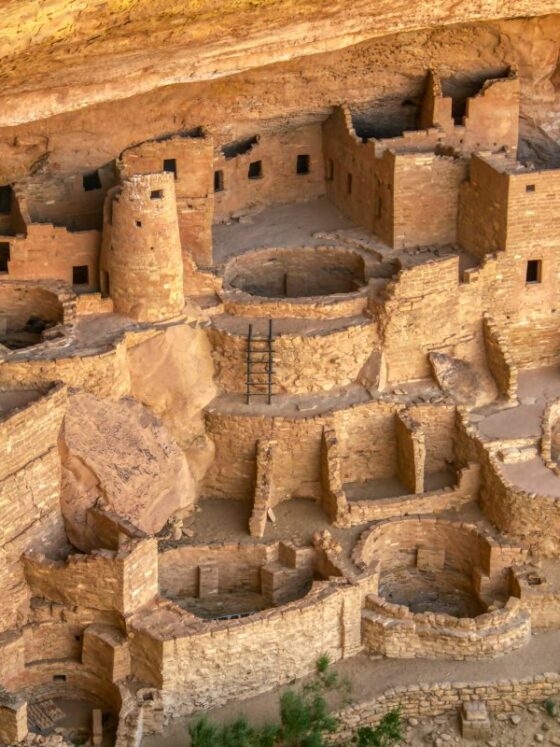Long before Rome conquered the Italian Peninsula the Etruscans flourished in Italy. The base of Etruscan power was located in Central Italy and is, consequently, where the name Tuscany comes from. Central Italy is rich in mineral resources and the Etruscans became renowned for their metallurgy and their bronze sculptures.
At their height, Etruscan city states expanded throughout northern Italy and down the west coast along the Tyrrhenian Sea into Campania, (the area around present day Naples). They existed alongside and traded with Greek cities occupying the southern Italian Peninsula as well as Italic tribes such as the Samnites and Sabines occupying the eastern coast of Italy. It was one of these Italic tribes, the initially small Latins, or to be more specific it was actually one of the Latin’s city states, Rome, who would expand, eventually taking over the Etruscans and all of Italy.
As Rome grew and took over Etruscan civilization it did so not by conquest alone but also by assimilation, merging the Latins and Etruscans. In fact some of Rome’s first kings were Etruscan, including Tarquin the Proud, the final king of Rome before it became a republic. Through this merging, elements of Etruscan culture lived on, as a part of Rome’s civilization.
If Etruscan history intrigues you, I highly recommend the Great Courses lecture series called, The Mysterious Etruscans, with Professor Steven L. Tuck, it’s a excellent course.
The following are a few of the best places to view Etruscan history in Italy.
In Rome Visit:
The Gregorian Etruscan Museum: Located inside the Vatican Museums. Notable pieces in the collection include the funerary monument with the dying Adonis and the Mars of Todi bronze sculpture.


National Etruscan Museum of Villa Giulia: Perhaps most notable this museum houses the Pyrgi Tablets. Gold tablets with text written in both Etruscan and Phoenician, which helped advance understanding of the Etruscan language. Another highlight of this museum is the Sarcophagus of the Spouses, which was found at Cerveteri. You may want to bring a guide with you. There is little information on the displays and even less in English.





In Cerveteri Visit:
Necropolis of Banditaccia: An UNESCO World Heritage site, this Etruscan city for the dead is a must see. Tombs built from tufa to reconstruct Etruscan houses are laid out in a city-like plan. One can explore inside the tombs and walk along ancient trails that used to be streets winding through the necropolis.




For more photos See my post – A Day Trip to Cerveteri
National Archaeological Museum of Cerveteri: A very small but well curated museum with a few artifacts from the nearby necropolis.


In Tarquinia Visit:
Necropolis of Tarquinia (also known as Monterozzi Necropolis): The Tarquinia Necropolis is also an UNESCO world heritage site, best known for its tomb’s fresco paintings. Many of the tomb paintings can still be seen.


National Archeology Museum of Tarquinia: Worth visiting, this museum houses the carved Winged Horses, as well as a few reconstructed tomb frescoes removed from the Necropolis.
In Florence Visit:
National Archaeological Museum of Florence: This museum has more than Etruscan artifacts; it also houses a lot of Egyptian displays. Among its Etruscan pieces the most notable is probably the bronze chimera of Arezzo.

My personal favorite part of this museum was finally uncovering the mystery of the deadly back scratcher. This was the only museum I visited to actually identify this contraption. Turns out, it’s not a deadly back scratcher, it’s a torch holder… 🙂




In Orvieto Visit:
Crocifisso del Tufo Necropolis: The tombs at this necropolis have Etruscan inscriptions engraved above the entrances with the family name of those Etruscans laid to rest there long ago.


Claudio Faina Museum: As well as Etruscan artifacts this museum houses a vast Roman coin collection and a large Greek and Etruscan vase collection. A nice museum but not as good as the National Archeological Museum located across the Piazza Duomo from it.

National Archaeological Museum of Orvieto: Really great museum with a lot of artifacts from nearby Etruscan sites.

Ruins of the Etruscan Temple of Belvedere: All that remains at the temple site itself is the foundation of the temple, but one can view several excavated terracotta objects that decorated the temple at the archeological museum mentioned above. Also on display at the museum is a video that visually reconstructs the temple.

For more photos of the Necropolis and the Museums
See My Post: Lovely Orvieto
In Chiusi Visit:
Tomba della Scimmia (tomb of the monkey), Tomba della Pellegrina, and Tomba Leone: These tombs are only open on certain days at certain times and you must sign up beforehand.
National Etruscan Museum of Chiusi: You can sign up to join the tour of the tombs here.
Museo Civico La citta sotterrarea: Underground tunnels displaying a large collection of urns and gravestones with numerous Etruscan inscriptions.
In Sovana, Sorano, and Pitigliano Visit:

The Vie Cave (the plural of Via Cava): Are ancient roads carved deep into rock often with Etruscan tombs carved into the walls alongside them.

The Citta del Tufo Archaeological Park: Made up of several sites around Sorano including, The Etruscan necropolis of Sovana, the Rock Settlement of San Rocco, and the Rock Settlement of Vitozza.

In Bomarzo Visit:
Piramide Etrusca Di Bomarzo: This is a very unique site. A large rock monument with steps and platforms carved into it. It is believed to have been used by Etruscan augers while interpreting omens.
Honorable Mention:
In Cortona Visit:
Etruscan Academy Museum
Archaeological Park of Cortona
In Volterra Visit:
Enrico Fiumi Archeological Park
Guarnacci Etruscan Museum
The Etruscan Arched gateway











